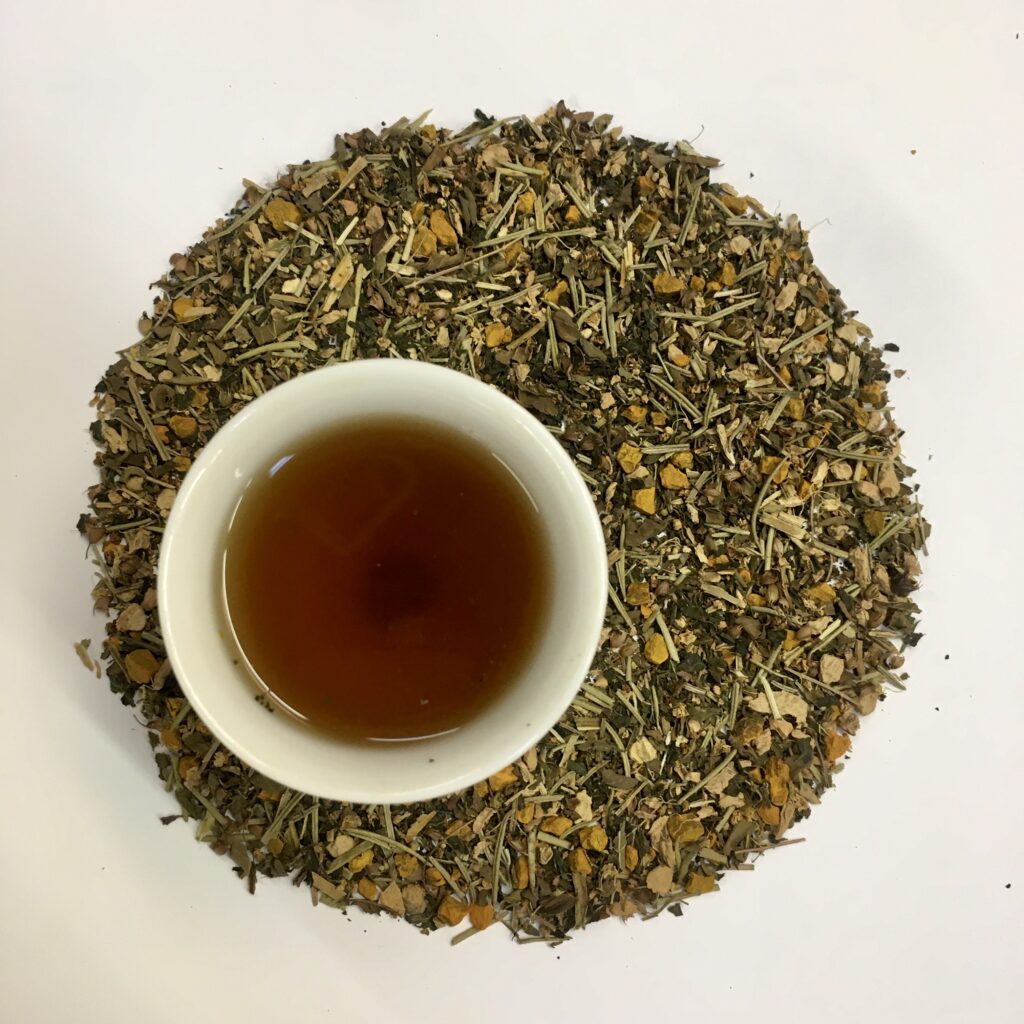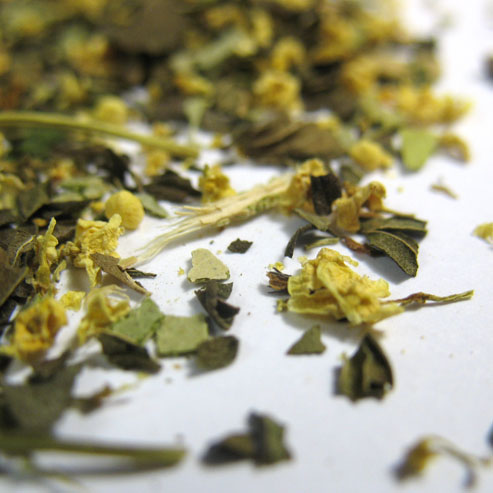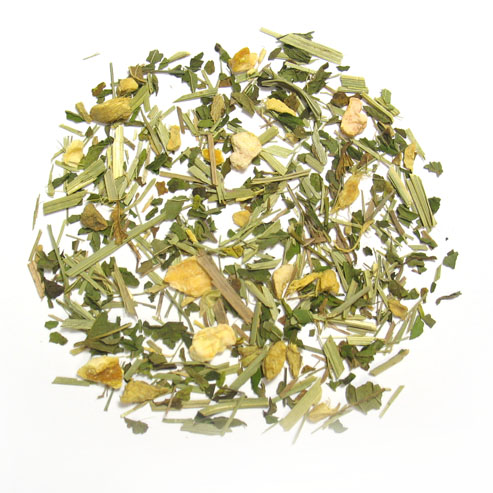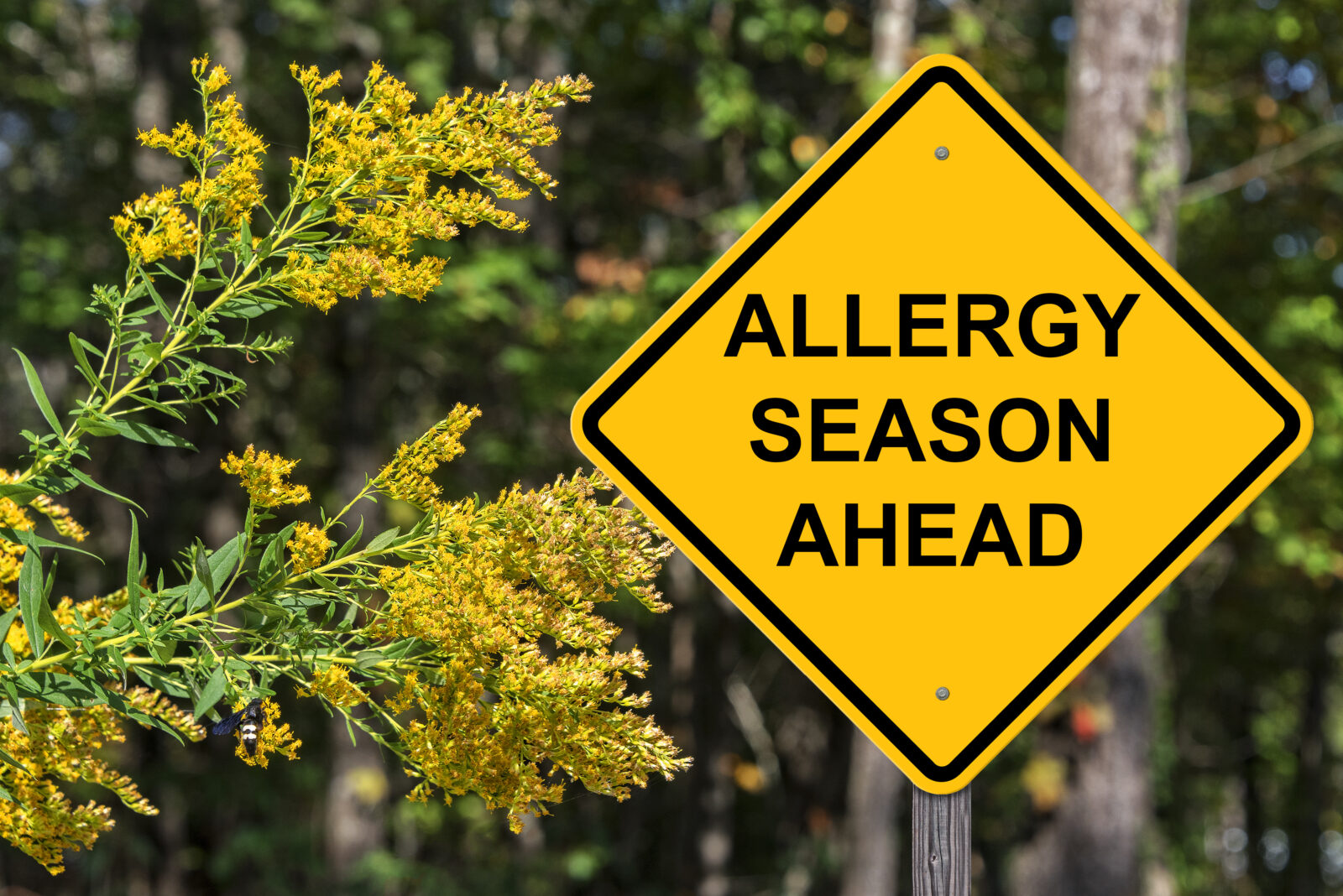Seasonal Allergies are Here — Fight Back With Tea
They swarm and flood the atmosphere every April in Colorado, but it’s not easy to see them in the air. Instead, we feel them.
The males of seed-bearing plants begin broadcasting grains of pollen as early as late February in the Front Range. But the big release, the collective eruption of pollen, doesn’t happen until April, when trees send forth the the fine, powdery substance that eventually leads to reproduction.
The mass distribution of pollen is essential for plant life, and thus human existence. But many of us humans don’t exactly respond with enthusiasm to the return of pollen dust every year. We sneeze. Our eyes itch, and we rub them until they turn red. Our voices grow hoarse and breathing turns labored, and we start popping over-the-counter pills that often mitigate the symptoms of seasonal allergies, but also can make us sleepy and dizzy.

While April packs a hay fever wallop, the rest of summer still involves pollen, as grasses and then weeds send their pollen out into the world. The middle of August can challenge allergy sufferers with particular force, as ragweed, the golden-flowered plant that blankets parts of the Front Range, casts its pollen into the environment.
There’s no escaping pollen. But we can take steps to at least reduce its impact on our sinuses and eyes. Closing windows, for example, helps limit the amount of pollen that enters homes, and can lead to better sleeps. Showers before bed, too, make sense: the cascade of water strips away pollen clinging to hair and body and potentially interfering with rest. Taking pills also helps.
Got allergies? Tea to the rescue
Don’t forget about tea. While our favorite beverage will not cure seasonal allergies — the only possible cure involves working closely with an allergist for an extended period of time — tea absolutely can help soften and diminish those symptoms that vex our days and nights. The key hinges on botanicals that we incorporate into some of our herbal teas. It’s these plant compounds that can open sinuses, and ease chests and soothe lungs.
If you must endure allergy season every year, we are sorry. Over here in the land of Ku Cha, we understand the challenges profoundly: Some of us also suffer!
Teas for Seasonal Allergies: Allergy Blend (Organic)

Many of our teas offer potential benefits to those navigating the months-long allergy season. But we crafted this custom blend explicitly to address the misery that pollen imposes upon so many people around the world. For this power-packed blend, which lightly spicy and sweet, it all revolves around the botanicals: turmeric, nettle, ginger, elderflower, tulsi and rosemary. Each of them can help, but we’ll focus on just a few.
Research suggests that nettles, for example, may contain compounds that block histamine receptors. As a result, the body does not release inflammatory molecules designed to combat histamines; it is these molecules that provoke allergy reactions in so many people.
Rosemary, too, has anti-inflammatory and antioxidant effects, and potentially leads toward less potent seasonal allergy symptoms. Tulsi, an adaptogen, manages stress along with inflammation, and people around the world take ginger to reduce eye, nose and throat swelling and itching — all of which are hallmark symptoms of seasonal allergies. Finally, research suggests that elderflower helps keep the body’s immune system in check when histamines enter the bloodstream and the immune system begins fighting back. It’s the battle between histamines and the immune system that sparks so many unfortunate symptoms.
Teas for Seasonal Allergies: Congestion Blend (Organic)

Congestion comes with all sorts of health issues: common colds, for example, or the flu. Count seasonal allergies as another congestion precipitant. In fact, for most people who contemplate the April kick-off of pollen season with dread, congestion is a principal ailment, along with itchy eyes.
Given the abundance of people wrestling with congestion, we developed our own bespoke blend to help them power through stuffy noses and raspy breaths with less difficulty. Once again, it’s all about the botanicals, in this case eucalyptus, elderflower and peppermint.
If you have purchased over-the-counter drugs to manage congestion, there’s a good chance they contained eucalyptus, which is a plant botanical that comes from the eucalyptus tree, native to Australia, Tasmania and nearby islands. However it grows in profusion in California, where during the 19th century California Gold Rush Aussies brought the trees to the Golden State. By the 20th century, thousands of them had been planted, and they thrive today.
It’s a potent botanical, and already commonly used to deal with congestion. In addition, we incorporate peppermint into this blend. Research shows that peppermint may help relax throat muscles that lead to coughing, and also can counteract the stress and mental fatigue that often plagues allergy sufferers.
Teas for Seasonal Allergies: Ginger Refresh (Organic)

We adore slices of the root pickled, and eaten with sushi. It’s central to many stir fries, Asian soups and Indian curries. It also comes on strong during the holiday season, when bakers use it in cakes and cookies, including gingerbread. And this extremely versatile culinary rhizome, it turns out, can also help manage symptoms of seasonal allergies.
One study even revealed that the bulbous root’s efficacy in treating allergies rivaled that of a prescription drug — with fewer side effects.
Given its allergy advantages, our Ginger Refresh serves as an excellent candidate for allergy victims. In addition to the tasty and distinct rhizome, this delicious blend contains lemongrass, peppermint (which as mentioned earlier is another allergy fighter), licorice root (superb for digestion) and lemon peel.

